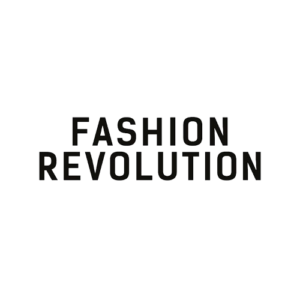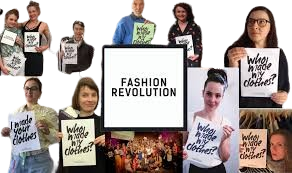This is a fascinating collaboration between two women from two different fashion revolutions on opposite sides of the globe. Indigo jackets are handwoven with reclaimed embroidery details and spun and woven by hand. As part of their mission, they use clothing as a starting point for discussion of ancient and modern cultures. Originally from North Vietnam, Tamay belongs to the Red Dzao ethnic minority group.

She is originally from Bristol, UK, where Hannah manages Tamay & Me. Hannah and Tamay became friends when Tamay taught her the detailed embroidery of the Dzao people in 2008, sitting together for over three months. This was the beginning of their friendship. Ethics are the lifeblood of the Dzao. Wearing clothing that isn’t wasteful is difficult in the West. For centuries, there have been the Dzao who have presented it most beautifully.
All clothes are made by the Dzao themselves. Their pride in their skill and identity is what makes them proud to make them. In Dzao culture, a woman makes new clothes every year. Embroidery was adorning the trousers, along with the jacket’s tailpiece, the sleeves, and even the back, since the jacket was entirely embroidered. As far as Dzao they can be seen strolling through markets, riding buses, riding motorbikes, or visiting other towns and cities. It is possible to identify the village where they hail from.
Despite their ability to move around with a sense of belonging, they always carry a visual expression of who they are and from where they come. The western sub-cultures behave just as they do in so many other cultures as well. We put on clothes in the morning not only to keep us warm and dry but to express our own identity and that of the group or culture that we are a member of. Clothing serves a function and makes me feel like I belong, and that is important to so many cultures across the globe.
These clothes are made by the Dzao for long periods, not just moments. Their clothes are respected, and their clothes are respected by each other. Indigo cloth and embroidery are valued. Rather than the product itself, the value lies in the making process. Time, quality materials, and the ability to concentrate and apply skills all contribute to the value of something made, whether it be garments, books, or cars. Making clothes yourself makes you stronger according to the Dzao. The act of embroidery is meditative, it requires a lot of attention and getting on with it. You feel calm when you are embroidering, but not only that, but you also feel satisfied. During your work, you produce something magnificent.

My 8 years of knowing the Dzao have witnessed their lives transform from that of an ancient civilization without electricity in their homes, with no access to anything but locally grown food, homemade clothing, and a completely independent cultural community based on their own beliefs and practices.
Dzao culture is going through a very challenging time and traditional ways of making clothes and dressing are under threat. Consequently, this shift is taking place exactly at the time that Westerners are sick of bad quality garments, exploitation, throwaway culture, and chemical production, every one of the things the Fashion Revolution stands against. The Tamay & Me brand has designed a series of jackets that reflect the characteristics and abilities of the Black Tay and Dzao people.
These jackets are based on a traditional men’s style from these mountains worn by men all over the region, whether they’re working in the fields, going to school, or interacting with friends. The figurehead of her village in north Vietnam, Tamya, is very passionate about sharing the history and culture of her embroidery in the village, as well as ensuring that wealth is equally distributed. Producing is her responsibility.
Traditionally, Organic cotton is grown, spun, and woven by hand in the Black Tay village nearby. The families have grown, spun, and woven the cotton for generations. Clothes manufactured in China are cheaper, but they do not have the same appeal in the local market. Another way handmade products stand the test of time is to become even more beautiful as they age. Two buckets of fermented indigo are used by the weavers and indigo dyer to dye the different colors of the dye using different tones of indigo.
As well as homegrown indigo, she uses commercial indigo. Tamay has enabled these families to afford to send their children to college. In the village where Tamay lives, Ta Phin, the embroidered jackets are carefully bought from people in need. As a result of Tamay, people can continue to completely make their clothes by repurposing old clothes. Hand-plaited silk, appliqués, and metal buttons are also used to finish the jackets, all of which come from local artisans.
Chou, Phan Ta May, and May are the people who manufacture the jackets. As a family, they are delighted to be able to work from home on their own time and have a regular source of income away from the tourist industry rather than depending on a job. In the house, Chou is working on an industrial sewing machine, and May is doing the hand stitching on the terrace. We honor the Dzao way of making and wearing clothes throughout the Taylor & Me jackets.
Among communities that still make clothing in this way, the Dzao are unique. Identifying the source of our clothing, as well as where our food comes from, is so important. Our satisfaction with clothes depends on knowing how they are made, looking after them, and wearing them for a long time. A long time will pass before anything happens, but the process is underway.
As I explain to people where every component comes from, I am always delighted to see their reactions. Fashion Revolution minis are sparked every time it happens! People are always talking about it! Perhaps that is the appeal of Dzao clothes-they are not fashion-focused. To inspire a response, I love introducing them to the fashion world. There are two ways of living the Dzao way: the traditional way and a way that shows how to live well with less and still appear beautiful.
